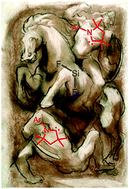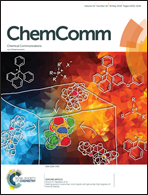Silicon-fluorine chemistry: from the preparation of SiF2 to C–F bond activation using silylenes and its heavier congeners†
Abstract
This feature article is intended to provide a background to the history of the isolation of silicon(II) fluorides and the different synthetic methodologies used to generate them. Although first detected in the 1970s, the chemistry of silicon(II) fluorides has not encountered serious research efforts for a rather long period of time. This is somewhat surprising given the fact that the chemistry of compounds with divalent silicon has undergone a renaissance during last three decades. Recently, the interest in silicon(II) fluorides have been resparked with tremendous progress being achieved in this area, in particular, with respect to their synthesis and structural characterisation. The successful isolation of cyclic alkyl amino carbene (cAAC) stabilized silicon difluoride has completed the classic progression of SiF2, from a transient intermediate to spectroscopically detected molecule to a stable compound. The related germanium(II), tin(II), and lead(II) fluoride chemistry will also be discussed. Apart from the isolation of tetrel(II) fluorides, the use of compounds with low valent group 14 elements for the selective activation and functionalisation of C–F bonds has witnessed some remarkable advances, which will also be summarized in this feature article.

- This article is part of the themed collection: Fluorine Chemistry


 Please wait while we load your content...
Please wait while we load your content...